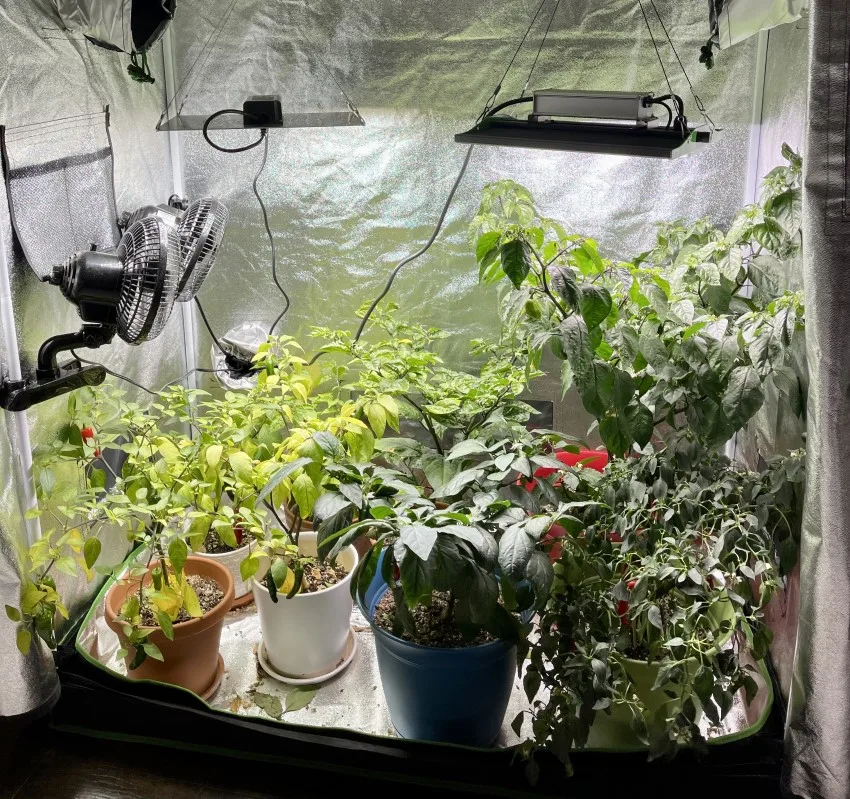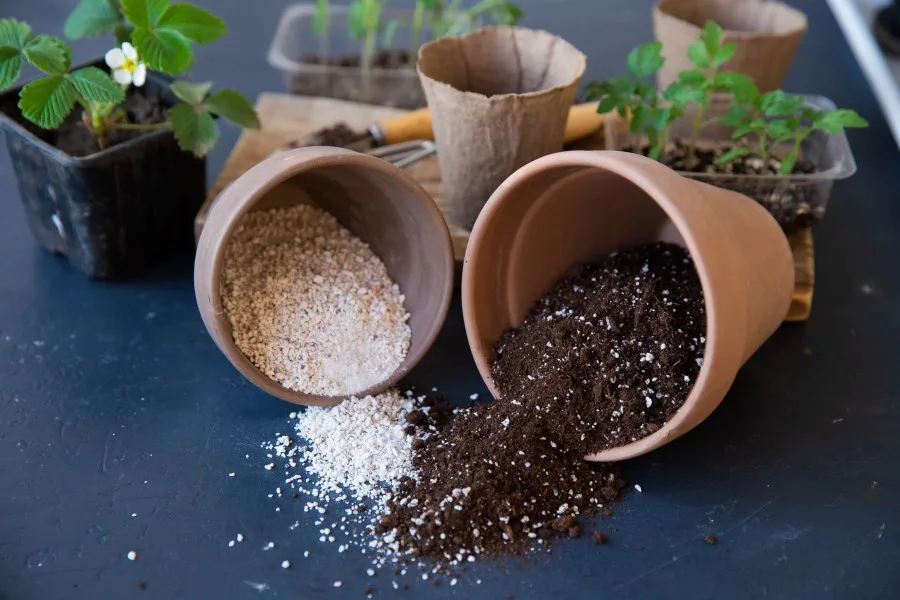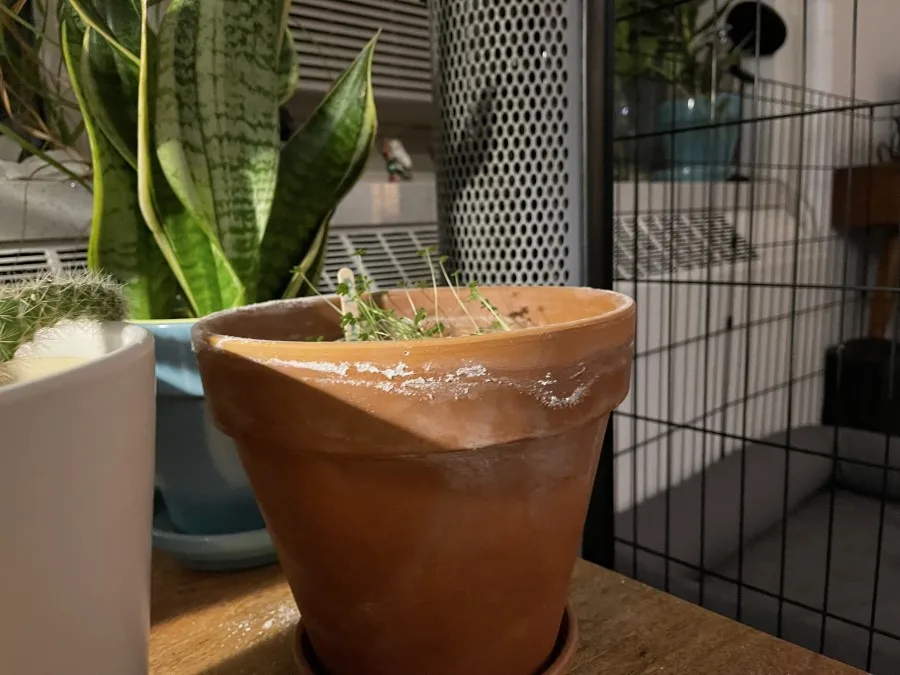One factor that influences your plants’ health is your ability to choose suitable size pots for them. A plant’s pot will be its primary source of moisture and nutrients for months or even years, so it is important to make it as comfortable as possible.
It’s important to make sure the size is ideal for promoting growth and allowing your plants to reach their full potential.
Choosing the right-size pot for your plants is crucial. The wrong size pot may suppress your plants’ natural development, cause unnecessary stress, and even trigger deterioration. The right pot size will do wonders for your plants when it comes to its growth rate, lushness, and overall wellbeing.
The rest of this article will discuss why it’s crucial to choose the right pot size for your plants, the effects of a pot that’s too big, and the impact of a pot that’s too small. We will also share helpful tips on other factors when choosing pots for your plants. Let’s get started!

Does the Size of Your Pot Matter?
Many plant parents have the notion that pot size is based on the plant’s size. This common misconception sometimes results in disastrous consequences for the plant. Remember that pot size should be based on a plant’s root mass. Ideally, you should go for a pot with a diameter at least one inch (2.5 cms) wider than your plant’s root ball.
The size of your pot matters because it determines how well your plant’s roots will develop over time and should be based on the plant’s root mass. Root health is essential in absorbing water and nutrients from the soil. However, since there are fast and slow growers, their growth rate should be considered when making your choice.
Pot Size Conversion Table
Here is a simple table that you can use as a guide when choosing the right-size pot to grow your plants:
| Pot Size (inches/cms) | Pot Size (gallons/liters) | Soil Needed (cups/liters) | Soil Needed (ounces/kilograms) |
| 4″ (10.16 cms) pot | .125 gallon (pint) (.47 liters) | 1 cup (.24 l) | 8 ounces (.23 kg) |
| 5-6” (12.7-15.24 cm) pot | .25 gallon (quart) (.95 liters) | 4 cups (.95 l) | 32 ounces (.91 kg) |
| 7-8” (17.78-20.32 cm) pot | 1 gallon (3.78 l) | 15 cups (3.55 l) | 120 ounces (3.4 kg) |
| 8.5″ (21.59 cm) pot | 2 gallon (7.57 l) | 31 cups (7.33 l) | 248 ounces (7 kg) |
| 10″ (2.54 cm) pot | 3 gallon (11.36 l) | 48 cups (11.4 l) | 384 ounces (10.9 kg) |
| 11″ (27.94 cm) pot | 4 gallon (15.14 l) | 63 cups (14.9 l) | 504 ounces (14.3 kg) |
| 12″ (30.48 cm) pot | 5 gallon (18.93 l) | 79 cups (18.69 l) | 632 ounces (17.9 kg) |
| 13″ (33.02 cm) pot | 6 gallon (22.71 l) | 96 cups (22.7 l) | 768 ounces (21.8 kg) |
| 14″ (35.56 cm) pot | 7 gallon (26.5 l) | 112 cups (26.5 l) | 896 ounces (25.4 kg) |
| 16″ (40.64 cm) pot | 10 gallon (37.85 l) | 159 cups (37.6 l) | 1,272 ounces (36.1 kg) |
| 18″ (45.72 cm) pot | 15 gallon (56.78 l) | 239 cups (56.5 l) | 1,912 ounces (54.2 kg) |
| 21″ (53.34 cm) pot | 20 gallon (75.71 l) | 320 cups (75.7 l) | 2,560 ounces (72.6 kg) |
| 24″ (60.96 cm) pot | 25 gallon (94.63 l) | 400 cups (94.6 l) | 3,200 ounces (90.7 kg) |
| 30″ (76.2 cm) pot | 30 gallon (113.56 l) | 480 cups (113.6 l) | 3,840 ounces (108.9 kg) |
Note that the figures above are just estimates. Pot shapes vary, which may affect the pot’s actual volume.
Some pots may be elongated while some are short, some are straight, and others are tapered. Consider soil compression, as well, because this it may alter the pots’ soil needs by 15-20%.
How Pot Size Impacts Plant Growth
The right pot size will significantly impact how well or poorly your plant grows.
Some plants like their pots to be just the right size, some prefer more room for growth, and others love being rootbound. The key is to determine your plants’ needs to give them exactly what they want.
Let’s go over what happens to your plants when their pots are too big, too small, and just the right size.
What Happens When Your Pot is Too Big
The bigger the pot, the more soil it contains. The soil in a large pot will take longer to dry up, making the plant more vulnerable to mold growth, fungal diseases, and root rot. The boost in nutrients that come with additional soil might also force the roots to take in more nutrients than the plant actually needs. This can cause the roots to burn and the plant to eventually die.
When to Use an Oversized Pot
In general, you should go for a pot that is at least one inch (2.5 cms) wider in diameter than your plant’s root mass. However, some plants like stretching out their roots and growing depending on available space.
Pro tip: You can trigger as much as 40% growth in some plants by merely increasing the size of the pot to double that of the current pot.
These plants have root systems that can sense how big (or small) the space is around them. If the pot is bigger, the roots will grow and extend until they reach its walls. The roots can also take in more nutrients since the pot has more soil.
What Happens When Your Pot is Too Small
Plants in smaller pots need frequent watering because the soil dries up faster. They are also susceptible to stunted growth because their nutrient intake is limited to what’s available in the small amount of soil inside the pot.
If the root system has grown so much that it has completely overtaken the soil, the nutrients available may no longer be enough to sustain the plant.
Furthermore, as the plant grows, it’ll become tall and top-heavy. Therefore, it’ll be at risk of toppling over when there’s a strong gust of wind, rainfall, or when someone walks by. Pets and children can easily topple over a top-heavy plant, resulting in snapped stems and damaged leaves.
When to Use a Pot That’s Too Small
Certain plants prefer small pots. These plants thrive when they’re root bound, and some only produce flowers in such a state (like Hoyas). Smaller pots also limit a plant’s growth, so this strategy works if you want your plants to remain small. Be mindful about watering and fertilization because smaller pot plants tend to be needier.
What Happens When Your Pot is the Right Size
When your pot is the right size for your plant, you will instantly notice a difference in its growth pattern. It’ll respond to the change with new leaves, more vibrant colors, flowering, and an overall improvement in its appearance. The right size pot translates to just the right amount of soil necessary for your plant to absorb nutrients and thrive.

Should You Re-pot Your Plants as They Grow Bigger?
You should re-pot your plants as they grow bigger. Moving them to a larger container will provide more room for the roots to stretch and a bigger space for absorbing nutrients. Root growth triggers plants to flourish and produce more leaves, flowers, or fruits.
Here are some signs that your plant needs re-potting:
- It needs watering more frequently than usual.
- Roots are growing out from the drainage holes.
- The plant is root bound. Determine this by lifting the plant out of the pot. If you see that the roots are a tangled mess and there are significantly more roots than soil, your plant is rootbound and needs to be moved to a bigger pot.
However, if you’re happy with a plant’s current size, you don’t necessarily need to move it to a bigger pot. Note that plants generally need to be re-potted every 12-18 months when they’re growing. If you’re at this point, consider giving your plant some fresh soil to give it a nutrient boost before replanting it in its next pot.
Here’s what you should do to give your plant a refreshing boost:
- Remove your plant gently from its pot.
- Remove as much soil as you can from the roots.
- Throw out the old soil or set it aside for future use.
- Rinse the pot to eliminate old soil, insects, and other debris.
- Cut off the outer sections of the roots using sterile garden shears until the root ball is ideal for the pot’s size.
- Place it back in the pot with some fresh potting mix.
- Water thoroughly until excess liquid escapes from the drainage holes.
Re-potting plants is tricky. You must re-pot them at the right time so that the change will be beneficial and not harmful for your plant. Additionally, you should re-pot during spring or the growing season, so the plant finds it easier to recover from the shock.
Other Factors to Consider When Choosing Pots for Your Plants
Aside from the size of your plant’s root ball, there are other factors to consider when choosing a pot for your plant:
Drainage
Always go for pots with drainage holes. The more drainage holes, the better. One of the worst enemies of plants is root rot, and a container without drainage holes offers the ideal scenario for this to occur.
Drainage holes allow excess water to drip out of the pot every time it rains or when you water your plant. This allows roots to breathe and air to circulate within the soil. Very few plants can tolerate sitting in wet, soggy soil for too long (some carnivorous varieties of plants can). Roots will soften and eventually rot, leading to the deterioration of the plant.
If you don’t like dealing with soil always escaping through the drainage holes (this can get pretty messy and quite frustrating), consider lining the bottom of the pot with coffee filter paper. You may also use gauze bandage strips, but make sure you only use one layer so that excess water can still drain freely.
Some people line the bottoms of their pots with a layer of gravel to improve drainage and stop soil from escaping through the drainage holes. Although this has been practiced in many gardens for years, it’s not advisable because it increases water saturation. Water accumulates where the soil meets the gravel, and it only drains out through the gravel when no more air space is left in the soil.
If the pots you’ve chosen for your plants don’t have drainage holes, you can punch holes at the bottom of each pot using a drill. Punch a hole at the center, then punch 4-6 holes around the perimeter, depending on the size of the pot.
Pot Material
Choosing the right pot material is exciting. It’s a lot like choosing an outfit for yourself at the start of the day. You base your choice on what vibe you want to exude. Here are some types of pots to consider:
Plastic
Plastic pots are inexpensive, lightweight, and common. You’ll see them practically everywhere. They come in various colors and are suitable for indoor and outdoor plants.
However, be mindful about leaving black plastic pots under direct sunlight in intense summer heat or directly under grow lights. The color black absorbs heat, so black plastic pots can get hot under intense light. Extreme heat within the pot can burn your plant’s roots.

Terracotta
Terracotta pots are a staple of gardening. They’re well-loved for their functionality and the rustic looks they lend to any space. They work for both indoor and outdoor setups but are ideal for outdoor gardens due to how well they can absorb excess water during rainfalls.
These pots are made from porous red clay. They absorb excess water from the soil while keeping the moisture within the pot walls until it dries out. They’re best for drought-tolerant plants, as well as for those that require frequent watering and high humidity.
Ceramic
Ceramic pots are sturdy, heavy, and a bit on the expensive side. They come in different colors and creative designs. They’re ideal for indoor gardening because ceramic pots tend to hold in water for longer than what is suitable for most plants. For this reason, placing them outdoors will increase the risk of overwatering and root rot for your plants.
Indoors, they can work great with various aesthetics inside the home. Water retention issues will be easier to manage since indoor setups often require a more hands-on and deliberate approach to watering schedules. Be mindful, though, about exposing ceramic pots to low temperatures because they tend to crack.
Self-Watering Pots
Self-watering pots are ideal for people not keen on regularly checking their plants’ watering needs. They’re also best for those who frequently go away on trips, leaving their plants to fend for themselves.
These pots are equipped with a water reservoir from which plants can collect water, usually through wicking. A small rope is threaded from the bottom of the pot through a drainage hole and onto the reservoir. Water can then be drawn up into the soil via capillary action, depending on how much the plant needs.
The idea is that your plant gets to drink water at its own pace, eliminating the need for guesswork on your part. All you have to do is check on the water reservoir every now and then. Simply refill it with water as soon as you see it empty.
Key Takeaways
Choosing the right size pot affects plant growth. A pot that’s too big can make your plants wilt and die from root rot or fungal disease. A pot that’s too small can stunt growth. There’s no ideal pot size for plants. The right pot size all depends on three factors:
- Your preference for your plant’s size (whether or not you want it to grow bigger).
- How fast or slow a plant grows.
- A plant’s root ball diameter.
Consider all of these factors before making your choice. Providing an ideal environment for plants to grow will help them grow healthier and lusher.
